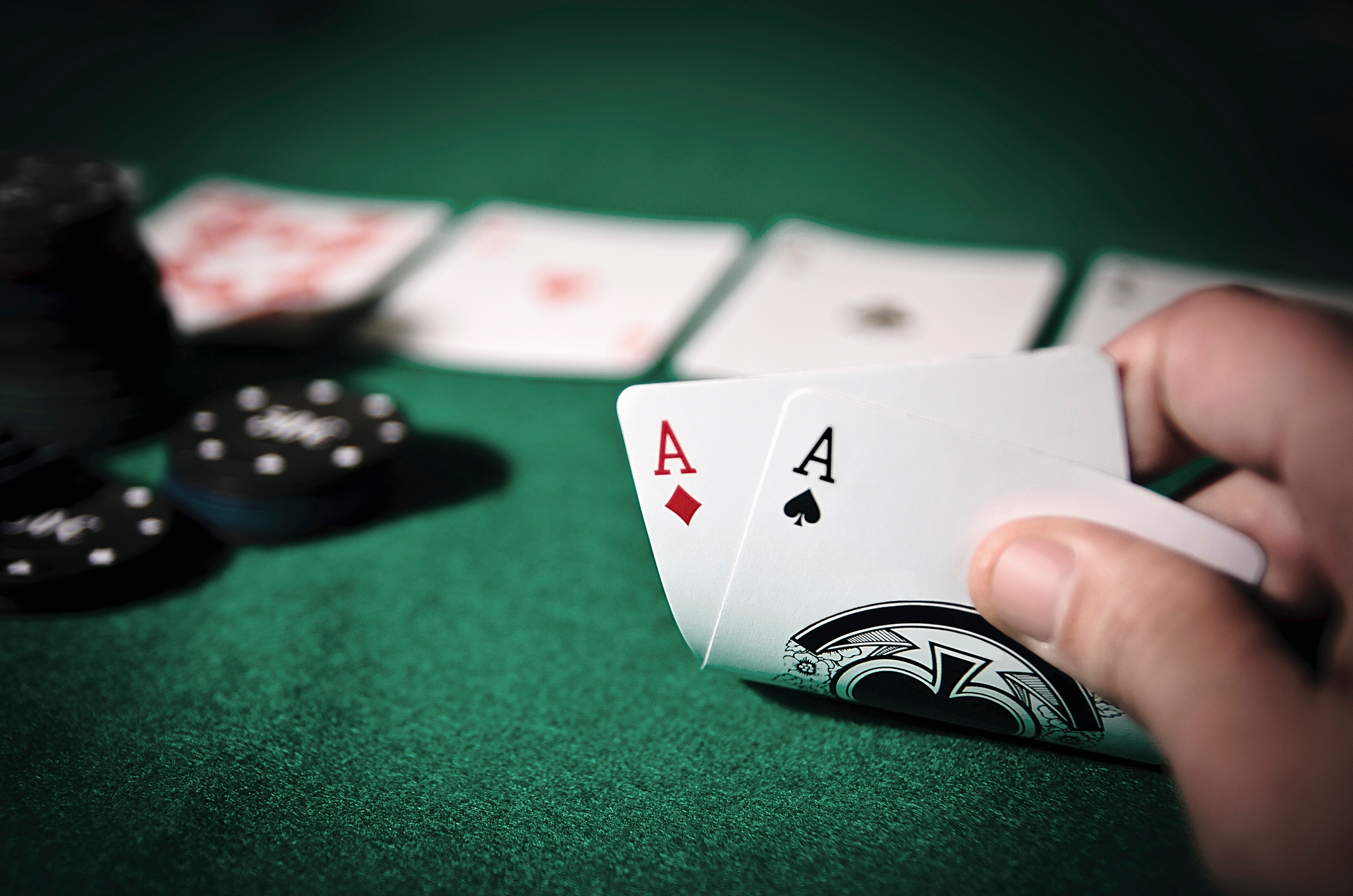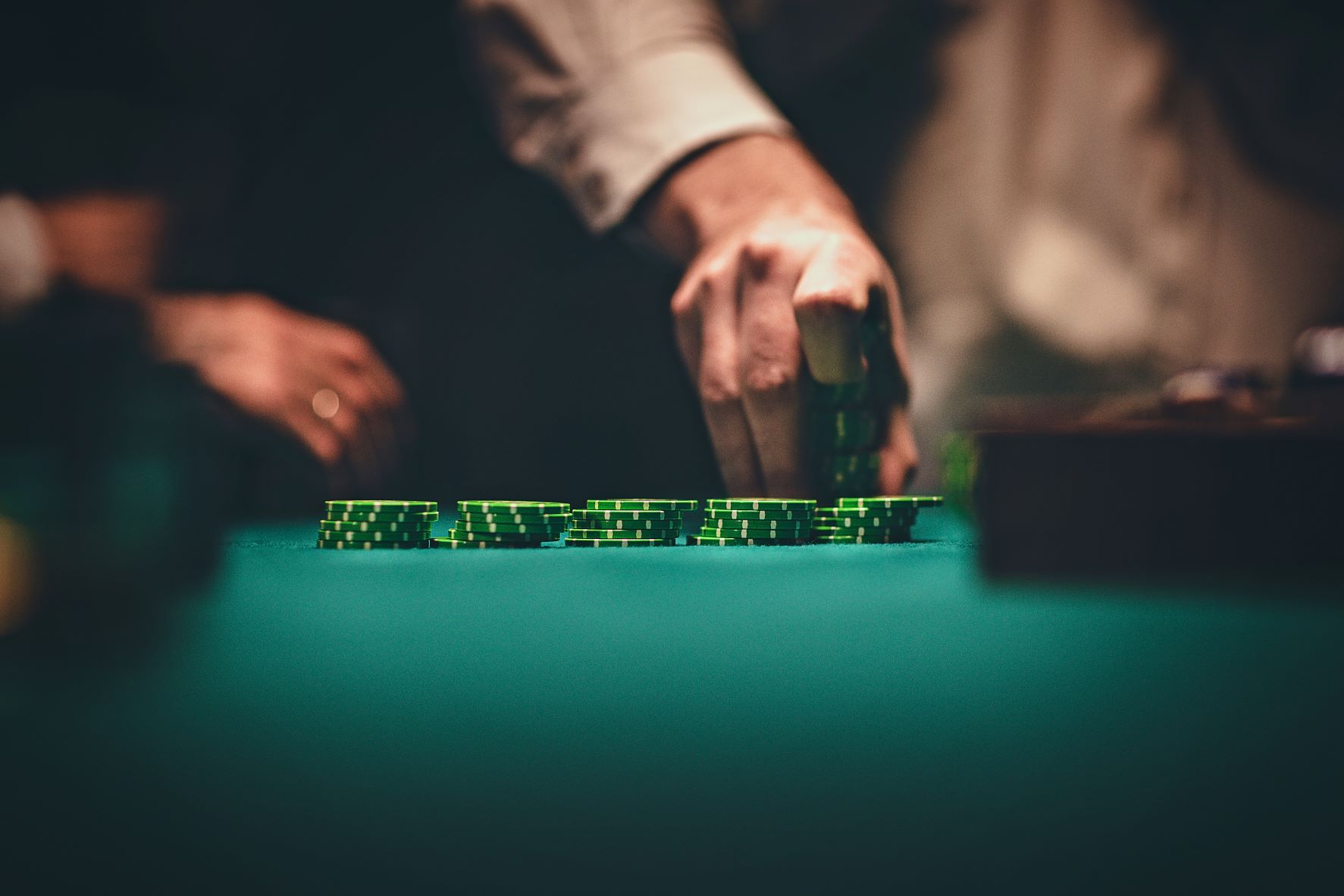
HOW TO PLAY Texas Hold’em

HOW TO PLAY Texas Hold’em
The Basics

No Limit Texas Hold'em is the most popular version of Texas Hold'em Poker. In No Limit Texas Hold'em, a player is allowed to bet or raise any amount of chips from their stack as long as the minimum bet or raise is met or if the player is All In. Betting or raising can continue until all players are All In.
Each player is dealt two cards face down from the deck. These two cards are also known as the “hole cards” and are only visible to the player to whom the cards were dealt. The players will use their two “hole cards” along with five community (or shared) cards to form their best possible five-card poker hand.
A round of betting takes place after the hole cards are dealt. This round is known as the “pre-flop.” Once betting for the pre-flop concludes, the “flop” is dealt. The flop is the first three community cards, which are dealt face up. Another betting round occurs after the flop.
Once betting concludes, the “turn,” or the fourth community card, is dealt. Another round of betting takes place. Lastly, the “river,” or fifth community card, is dealt. The final betting round occurs after the river. Once betting has concluded, players with hands still in play reveal their hands, and then a winner is determined.
How to Play No Limit Texas Hold'em

The Goal
Each player is dealt two cards face down from the deck. These two cards are also known as the “hole cards” and are only visible to the player to whom the cards were dealt. Over the course of a hand, five cards will be dealt face-up on the table; these are called “community cards.” The player’s ultimate goal in each hand is to create the best possible combination of five cards (i.e., the best hand) using one, both, or none of their two hole cards along with the five community cards.
The Buy-In
A buy-in refers to how much money a player will pay in order to play a poker game.
- In a poker tournament, all players buy-in for the same amount and receive the same amount of starting chips. These chips will not have any cash value. The bulk of the buy-in amount for a poker tournament goes into the prize pool, while a small percentage of the buy-in, also known as the “rake,” goes to the house.
- In a cash game, the buy-in is exchanged for chips equivalent to its cash value. Cash games will have a minimum and maximum buy-in based on the big blinds. Most card rooms will have a minimum buy-in of 40x the big blind and a maximum buy-in of 100x the big blind. Players are able to add to their stack in between hands or re-buy back in if they lose up to the maximum buy-in.
The Dealer Button
The dealer button, or “the button,” is a marker passed one player clockwise at the end of every hand. The marker indicates that the person sitting to the left of the player with the dealer button will be the small blind. When a player has the dealer button, they are referred to as “the dealer.”
The Blinds
At the beginning of each hand, before the cards are dealt, the two players to the left of the dealer must make forced bets, the “small blind” and the “big blind.” The big blind is typically twice the size of the small blind, and it indicates the minimum bet amount for the table. The player to the left of the dealer posts the small blind; the next player to the left posts the big blind. The blinds can vary depending on the stakes, betting structure, and game type being played.
In certain game types, each player may also be required to post an “ante.” An ante is also a forced bet, typically smaller than the blinds. While small and big blinds are forced bets for the two players directly to the left of the dealer, antes are forced bets for all players at the table.
The Deal and Pre-flop
Once the dealer button is set and blinds are posted, the cards are dealt. Each player is dealt two cards face down from the deck. These two cards are also known as the “hole cards” and are only visible to the player to whom the cards were dealt. A round of betting takes place after the hole cards are dealt. This round is known as the “pre-flop.” Action will start with the player directly to the left of the player who posted the big blind and will proceed clockwise around the table.
Texas Hold'em Betting Options
Players will have the option to “fold," "check," "bet," "call," or "raise."
- Fold: A player gives up on the hand and lays down their cards when it is their turn to act. The player is no longer involved in the hand and cannot win the pot.
- Check: A player chooses to pass on their betting option, and thus, action will move on to the next player. This is only possible when no other player has made a bet in the round.
- Bet: The first player in the betting round to make a bet.
- Call: Once a bet is made, the next players in line have the option to match (i.e., call) the bet.
- Raise: Once a bet is made, the next players in line are able to increase the original bet (i.e., raise). In raising, a player must raise by at least the amount of the previous bet/raise.
Texas Hold'em Betting Rules
General Texas Hold'em Betting Rules:
- The minimum bet is equal to the size of the big blind. The maximum bet a player can make is equal to their remaining stack. If the player has less than the minimum bet, they are still able to go All In but will only be able to win a portion of the pot.
- Minimum raise: The raise amount must be at least as much as the previous bet or raise in the same round. The maximum amount a player can raise is equal to their remaining stack.
- In No-Limit Hold’em, there is no cap on the number of raises allowed.
The Flop
Once betting for the pre-flop concludes, three community cards are dealt face-up on the table. These three community cards are known as "the flop." The first player to the left of the dealer still active in the hand (i.e., has not folded) will start the betting round. The action continues clockwise to each active player, and the round concludes once all active players have actioned. The hand continues to the “turn” if more than one player remains.
The Turn
The "turn," or the fourth community card, will be dealt face-up once the betting action is completed for the flop. Once again, the first player to the left of the dealer that is still active in the hand will start the betting round. The action continues clockwise to each active player, and the round concludes once all active players have actioned. The hand then continues on to the “river” if more than one player remains.
The River
The "river," or the fifth community card, will be dealt face-up once betting has concluded for the turn. This is the final community card and betting round. Players will use their two hole cards with the five community cards to form their best five-card hand. The same betting rules apply to the flop and turn, as explained above. If there is only one player left after this betting round (i.e., if all other players have folded), that player wins the pot. If there is more than one player remaining after the river betting round then these players will move on to the showdown.
The Showdown
The last person to bet or raise will show their hole cards to the table to determine their best five-card hand. If no players bet or raise, then the player in the first position from the button will show their cards first. The remaining players to the left of the last person that bet or raised will only show their cards if they have a better hand. If there was no bet on the final round, the player immediately to the left of the dealer shows their cards first, and the players next to action will only show their cards if they have a better hand. The chips are then given to the winner. In the event of a tie, the pot is "chopped" or split evenly between the tied players.
The Next Hand
Once the previous hand is over and the chips are awarded to the winner, the dealer button will be moved clockwise to the next player, the cards are shuffled, the blinds will be posted, and a new hand will be dealt. Refer to the steps above.
